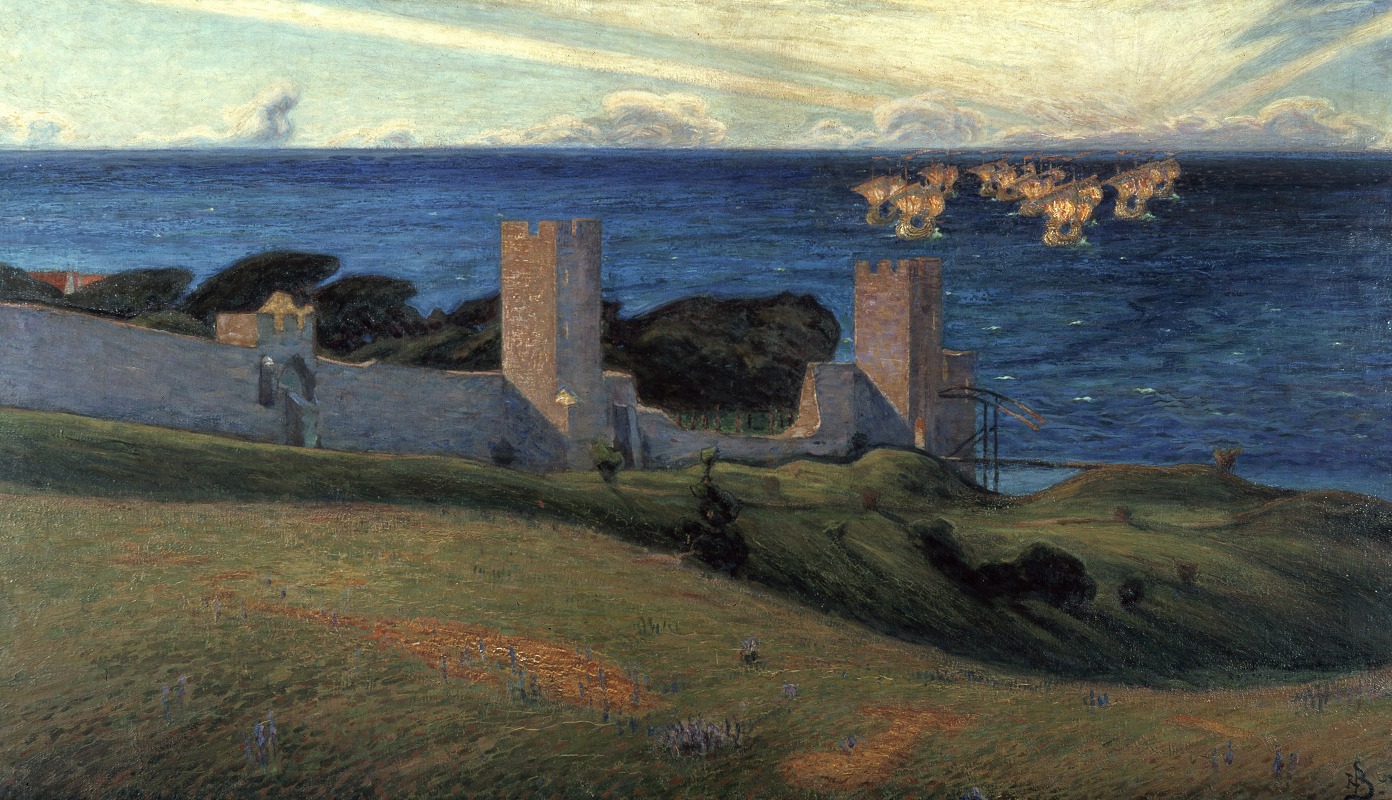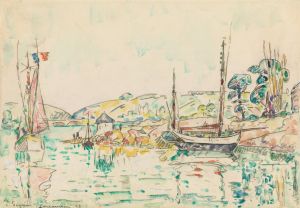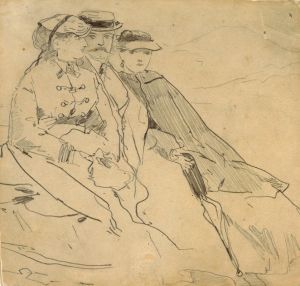
Vision. Scene from Visby
A hand-painted replica of Richard Bergh’s masterpiece Vision. Scene from Visby, meticulously crafted by professional artists to capture the true essence of the original. Each piece is created with museum-quality canvas and rare mineral pigments, carefully painted by experienced artists with delicate brushstrokes and rich, layered colors to perfectly recreate the texture of the original artwork. Unlike machine-printed reproductions, this hand-painted version brings the painting to life, infused with the artist’s emotions and skill in every stroke. Whether for personal collection or home decoration, it instantly elevates the artistic atmosphere of any space.
Richard Bergh's painting Vision. Scene from Visby (Swedish: Vision. Motiv från Visby) is a notable work by the Swedish artist, created in 1894. Bergh (1858–1919) was a prominent figure in Swedish art during the late 19th and early 20th centuries, known for his contributions to the National Romanticism movement and his role in shaping modern Swedish art. This particular painting is one of his significant works and reflects his interest in combining natural landscapes with symbolic and emotional themes.
The painting depicts a scene from Visby, a historic town on the Swedish island of Gotland. Visby is renowned for its well-preserved medieval architecture, including its city walls and ruins, which have made it a UNESCO World Heritage Site. In Vision. Scene from Visby, Bergh captures the town's unique atmosphere, blending its historical and natural elements with a sense of mysticism. The work is characterized by its subdued color palette and a dreamlike quality, which aligns with the Symbolist tendencies in Bergh's art during this period.
Bergh was deeply influenced by the Symbolist movement, which sought to convey emotions, ideas, and spirituality through art, often using allegorical or dreamlike imagery. In this painting, the interplay between the natural landscape and the historical ruins of Visby creates a contemplative mood, inviting viewers to reflect on themes of history, memory, and the passage of time.
The painting is part of the collection of the Nationalmuseum in Stockholm, Sweden, which houses many of Bergh's works. The Nationalmuseum is one of Sweden's most important art institutions, and its collection includes works by both Swedish and international artists.
Bergh's broader body of work includes portraits, landscapes, and allegorical scenes, and he was also an influential art theorist and teacher. His contributions to Swedish art extended beyond his paintings, as he played a key role in the establishment of the Artists' Association (Konstnärsförbundet) in 1886, which sought to promote modern art in Sweden.
Vision. Scene from Visby remains an important example of Bergh's ability to merge the natural and the symbolic, reflecting both his personal artistic vision and the broader cultural currents of his time. The painting continues to be appreciated for its evocative portrayal of Visby and its exploration of timeless themes.


















